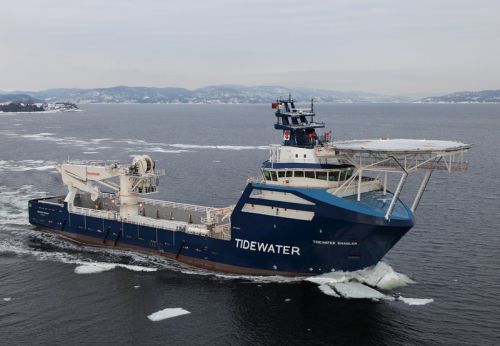
Offshore vessel market has been one area of the business that has had little to do with vessel scrapping. It was notable therefore that in the first quarter results for US-owner Tidewater that an announcement was made regarding the intention to scrap eleven vessels from its large fleet. Tidewater is arguably the largest offshore support vessel owner in the world, but the fleet is an ageing one so it is perhaps unsurprising that the news comes from this particular source.
Moreover a significant part of its fleet is already laid up in areas of the world where the standard of vessel is generally lower and older than anyway what’s seen in the North Sea.
When we take a look at the oldest vessels still in existence around the globe the majority of those over 30 years are AHTS vessels of an average of 6,300 bhp and are located largely in the Middle East, South East Asia and West Africa. About half as many are PSVs with an average of 1,200 dwt and are largely sitting in the US Gulf of Mexico.
Despite the deluge of older tonnage sitting in ports around the world owners are reluctant to send these old girls to the scrappers. An industry wide increase in required operating standards of vessels – even in regions such as the Middle East where traditionally these vessels could find employment, has seen a diminishing need for this older tonnage. Moreover the order books for new vessels is swelling again and as these brand new and higher spec vessels deliver everything else gets pushed further and further to the back of the queue.
Vessels that were scrapped over the last couple of years were largely 60s and 70s built and very much at the end of their useful lives. In addition many had been working in the US Gulf where a post-Macondo industry is at long last showing an increased focus on safety and this extends to the support vessels. It’s easy for an analyst to sit and look at the figures, around 15% of the global AHTS fleet is over 30 years old and 13% of PSVs – so let’s get the burners out and keep the fleet in renewal. But it’s rarely as simple as that, as this older tonnage is fully paid up, cheap to run and in depressed markets often the only ones that can go low enough to get a charter, for an individual owner there’s simply no need to remove them. Moreover remuneration for the scrap of a vessel is calculated on the weight of the steel (light deadweight tonnage) but unlike tankers for example, the value of an offshore vessel is in its equipment and capability rather than the volume of steel that could be melted down. For the time being, arguments for not scrapping your older vessels may outweigh those for doing so, but in an increasingly safety and environmentally conscious industry that will soon change.
Written by Inger Louise Molver, Offshore Analyst at Westshore Shipbrokers AS
We use cookies to improve your experience. By continuing to use our site, you accept our Cookies, Privacy Policy,Terms and Conditions. Close X